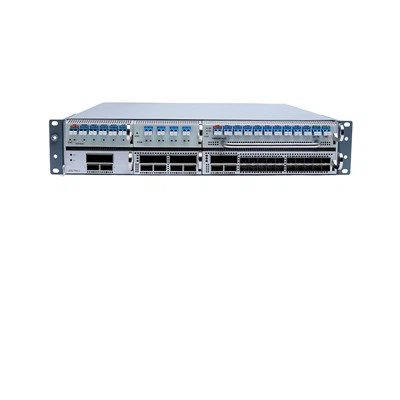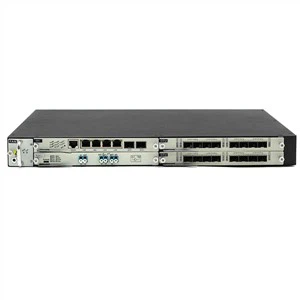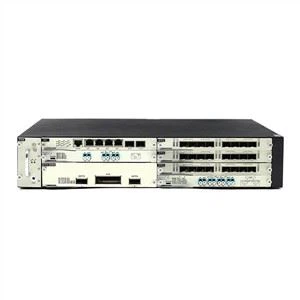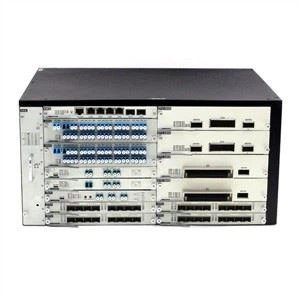Since the transmission rate of 5G forward network is 25Gbps, 25G optical module will be the main optical module in 5G forward network. How will the 25G optical module market develop in 5G forward network?
The optical fiber direct connection scheme is to connect all the optical fibers of each active antenna unit (AAU) and Du (distributed unit) to a point-to-point network. It is simple to realize, but it will consume a lot of optical fiber resources. It is the main way to build the forward network in the early stage. It generally uses 25G gray light module, mainly including two kinds of transmission distances of 300m and 10km.
In order to save fiber resources, 25G BIDI single fiber bidirectional optical module and 25G WDM optical module can be used. The 25G BIDI optical module adopts WDM technology, multiplexes multiple wavelengths on one fiber, and can support transmission distances of 300m and 10km. In the passive WDM networking mode, the 25G WDM optical module can use WDM technology to connect multiple active antenna units (AAU) and Du (distributed unit) with one pair or one fiber, while the active WDM / OTN / SPN scheme needs to connect the active antenna units (AAU) and DU (distributed unit) in the active WDM / OTN / SPN network OTN devices are arranged between the two, and multiple signals share optical fiber through WDM technology, which can not only save optical fiber resources, but also realize the networking mode of multiple topologies. These two networking methods are effective supplements to the point-to-point direct connection of optical fiber network to solve the problem of insufficient optical fiber resources. Therefore, a large number of 25G optical modules will be used for 5G forward transmission, which lays a solid foundation for the development of 25G optical module Market in 5G forward network.
With the coming of 5G era, the demand of optical module is increasing rapidly. Energy saving and cost are two indispensable conditions for data center to deploy network. In view of the high price and high power consumption of 40G optical module and 100G optical module, and the speed of 10G Optical module can’t meet the network demand, 25G SFP28 optical module was born, which makes up for the deficiency of the former three, greatly improves the port density, reduces the network deployment cost, and the power consumption is relatively low.
What is 25Gbase-T?
In recent years, 25Gbase-T technology has become a popular technology in cloud computing data center with high port density, low power consumption and network deployment cost. 25Gbase-T can achieve 25Gbps transmission on a single channel, and can support higher bandwidth Ethernet upgrade. It is suitable for data center and server room.
What are the advantages of 25Gbase-T?
1. Excellent output / input ability and structure ability
25Gbase-T can cost effectively expand the bandwidth capacity, and can meet the requirements of cloud data center and the next generation of data center servers and storage devices. 25Gbase-T can achieve 25Gbps transmission with a single channel. Compared with 10Gbase-T, it improves the network bandwidth performance by 2.5 times. At the same time, 25Gbase-T can provide 4 times of switching port density for each switching chip. Compared with 40Gbase-T, 25Gbase-T has higher port density and better scalability.
2. Automatic negotiation and high compatibility
According to the 25Gbase-T standard, the port of the switch can automatically identify the transmission rate and create links at the same rate. Through the industry standard interoperability specification, the network upgrade is greatly simplified and the connection cost is effectively reduced.
3. Flexible topology
Compared with 25G DAC high-speed cable, 25Gbase-T has a long transmission distance, so 25Gbase-T can support more topology cabling. 25Gbase-T is suitable for MOR and EOR cabling architecture, which can save a lot of cabling and management costs.
Introduction of 25G optical module
25G optical module is an optical module with transmission rate of 25Gbps, which is mainly used in 25G Ethernet and 100G (4 × 25Gbps) Ethernet. Packaged as SFP28, its function is to interconnect servers and switches in data center. 25G optical module can provide the most energy-saving way to meet the growing demand of data center network.
The following table lists the specific details of the 25G Ethernet interface standard specified by the IEEE 802.3 working group.
Physical layer | Interface standard |
Multimode fiber | 25GBASE-SR |
High speed cable (copper wire) | 25GBASE-CR |
High speed cable (copper wire) | 25GBASE-CR-S |
Electronic backplane | 25GBASE-KR |
Electronic backplane | 25GBASE-KR-S |
Twisted pair | 25GBASE-T |
Classification and application of 25G optical module
With the rapid development of Internet, cloud computing and big data, the construction of IT infrastructure data center is further accelerated. Among them, the optical module of SFP-25G-SR and the optical module of SFP-25G-LR are favored by the users of data center because they can provide cost-effective 25G and 100G network solutions. The 25G optical module is mainly divided into two types: the SFP-25G-SR optical module and the SFP-25G-LR optical module
1. SFP-25G-SR optical module
The central wavelength of SFP-25G-SR optical module is 850nm, which is used together with OM3 / OM4 multimode fiber with fiber diameter of 50 / 125 μ m, and belongs to short distance transmission optical module. The optical module of SFP-25G-SR has DOM function, which can help network management to monitor all aspects of information of optical module in real time. It is mainly suitable for switches, routers, network interface cards and storage network equipment of 25G Ethernet.
2. SFP-25G-LR optical module
The central wavelength of the optical module is 1310nm. It is usually used with single-mode fiber, and the transmission distance can reach 10km. It is suitable for long-distance data transmission. The optical module of the optical module of the optical module of the optical module of the optical module of the optical module of the SFP-25G-LR is DFB laser.
5G forward network promotes the development of 25G optical module Market
Considering the convenience and economy of network construction, the initial connection mode of 5G forward network will be mainly optical fiber direct connection scheme, supplemented by passive WDM scheme and supplemented by active WDM / OTN / SPN scheme.

Market analysis and forecast of 25G optical module
Market growth rate demand promotes 25G optical module development
In 4G network, 10G SFP + optical module is the main optical module of forward network. However, compared with 4G network, the total number of 5G macro base stations is expected to reach 1.3 to 1.5 times of 4G base stations, and the number will exceed 5 million, which further promotes the demand for higher speed optical modules. Because the transmission rate of 5G forward network is 25Gbps, the demand of 25G optical module will surge, which promotes the development of 25G optical module market.
Technology development promotes 25G
25G Ethernet technology has the characteristics of low cost, low power consumption and high density. With the increasing use of 25G optical modules in 5G networks, more and more optical module manufacturers will actively participate in the research and development of 25G optical modules around 5G applications. For example, 25G BIDI and 25G WDM optical modules use WDM technology to save fiber resources in 5G forward network transmission.
Competition drives 25G optical module Market
In addition, the fierce market competition will greatly promote the development of 25G optical module market. By 2021, operators will make efforts to prepare the network infrastructure and systems for the transition to 5G, and the market demand for 25G optical modules is expected to reach 2 million. In addition, 25G optical module also lays the foundation for higher speed network upgrade, such as 100G or 400G Ethernet, which further stimulates the prosperity of 25G optical module market. This means that the trial operation of 25G Ethernet and the full deployment in 2020 provide a bright future for the development of 25G optical module market.
As the starting point of 100G / 400G network, 25G Ethernet will make the market of 25G optical module more competitive and reach a new peak in the next few years. Due to the increasing number of 5G macro stations, the improvement of 25G optical module solutions and the gradual reduction of cost, 25G optical module will become the mainstream module in the market in the near future.
Compared with 4G, the biggest variable of 5G is forward transmission. Because the number of antenna channels has changed from 2 channels to 64 channels, the number of antenna channels has increased 32 times, resulting in a significant increase in forward transmission traffic. 10G Optical module is mainly used in 4G network. Since the bandwidth of 4G single RRU is only 1.25G, a large number of chain network structures are used in the forward direction of 4G network to save fiber resources and reduce the difficulty of deployment.
However, in 5G construction, as the minimum forward bandwidth needs 25G optical module, the price of 100G optical module is slightly higher than that of 25G optical module. Therefore, 25G optical module is most likely to be chosen as the solution for forward transmission. Based on the above reasons, 5G will greatly increase the market space of 25G optical module.
HTF's optical module products quality is guaranteed, and the accessories are imported.
Contact: support@htfuture.com
Skype :sales5_ 1909,WeChat :16635025029





















